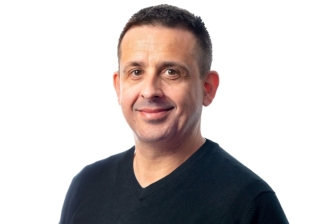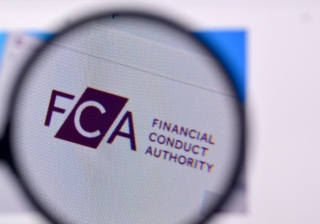Second charge lending – a year in the headlines
This time last year the second charge sector was riding a wave of positivity thanks to the successful integration of the Mortgage Credit Directive which - in stark contrast to some earlier fears - helped generate much needed awareness amongst the intermediary market and consumers. When combined with the improved lending figures reported over the closing months of 2016, and increased levels of competition, there was certainly reason to enter the new year with plenty of optimism. Looking back over the past 12 months there has been a regular supply of news, articles and announcements which have kept the second charge sector firmly at the forefront of specialist lending to maintain this optimism. So let’s look at a selection of these to chart its progression over the course of the year.

"There has been a regular supply of news, articles and announcements which have kept the second charge sector firmly at the forefront of specialist lending"
January
Finance and Leasing Association figures for January showed that second charge lending shrunk by 6% to £69m, compared to Jan 2016 data. This signified a somewhat disappointing, but not unexpected start to the year. Despite the increased profile and perception of the sector, this lacklustre lending growth underlined the amount of work needed to highlight the benefits and value attached to second charge loans.
February
Analysis from Shawbrook Bank suggested that capabilities surrounding digital signatures were cutting the time it took to apply for a second charge mortgage. This integration was said to have reduced the average cycle time from application to binding agreement from seven days – when postal methods are used – to just under four days. This tech enhancement represented a strong forward step for the sector.
March
Personal Touch Financial Services announced the launch of a direct-to-lender panel for second charge business, a move which opened the doors for ARs to go direct to second charge lenders. We have since seen further debates rage over network controls and this could be a topic to follow in 2018.
April
Second charge experts called for trade bodies to raise the profile of the sector. This was in response to the impending summer launch of new ‘super’ trade body UK Finance – following the merger of Asset Based Finance Association, British Bankers’ Association, Council of Mortgage Lenders, Financial Fraud Action UK, Payments UK and the UK Cards Association. Industry commentators were in full voice urging relevant organisations to do more to support specialist brokers and the second charge sector. And rightly so. Raising awareness continued to be an ongoing theme throughout the year.
May
Mortgage Brain launched a fully integrated second charge mortgage sourcing capability into its first charge sourcing system. Technology can be a great source of support for intermediaries and anything which makes their lives easier has to be a good thing. However, it’s also worth pointing out that second charge cases need to be dealt with by advisers/underwriters who possess in-depth product knowledge and access to a full second charge panel – not just a one-size-fits-all sourcing system. Only then can we ensure clients are matched with products and providers fully aligned with their present and future requirements.
June
As the first half of the year came to a close it was encouraging to see FLA statistics for H1 illustrate that the number of new second charge mortgages stood at 10,401, 11 per cent higher than in the first half of 2016. On a monthly scale, June saw new business rise by 33 per cent by value and 22 per cent by volume compared to June 2016. This represented the fourth consecutive month of growth following six months of decline starting in August 2016 and served to highlight the steady rise in second charge business across the board.
July
Optimum Credit completed the first public securitisation of second-charge mortgages by a UK mortgage lender since the credit crisis. This portfolio included £251 million of loans originated by the non-bank mortgage lender over the last three years. Whilst this may not have had any immediate impact on business volumes it certainly added to the feel good factor surrounding the second charge sector felt over the Summer months.
August/September
An article suggested that Vida Homeloans was looking at an expansion into new products areas including a potential move into the second charge market. In addition West One completed its first second charge case since entering the sector. These pieces of news provided a great lift for the market and heightened levels of competition which was a good indication of a strong Q3 performance.
October
Smart Money Ltd underwent a strategic restructure which saw the launch of Smart Money Finance as the focal point for all unregulated business activity. The aim of the restructure was to better differentiate between unregulated and regulated business offerings. These are specialist areas and ones which need to be handled by experts in their respective fields. Regulated and unregulated business enquiries each provide their own set of challenges and it’s important to have specialists in place to correctly transact this business first time.
November
Figures released in November by the FLA showed that the number of second charge mortgage repossessions continued to fall in the third quarter of 2017. In total, 23 repossessions were made between July and September – down 25.8% on the same three months in 2016. And the annual rate of second charge mortgage repossessions as a percentage of average outstanding agreements also shrank to 0.06%, down from 0.07% at the same time in 2016. This data helps outline the growing professionalism attached to the sector and lenders’ commitment to helping customers in financial difficulty
December
In terms of headlines December appeared to be a quiet month on paper, but much of this was down to second charge lenders and brokers getting business done before any festive break and forward-planning for 2018.
Following 12 months of technological advances, increased competition, strategic alignment, business volumes on the up, accessibility rising, heightened awareness and the introduction of simpler sales processes – then it’s clear that 2018 is likely to be a busy one. And it will be interesting to see what headlines and stories will emerge over the course of the year.
Breaking news
Direct to your inbox:
More
stories
you'll love:
This week's biggest stories:
Buy-to-let
Buy-to-let market 'in transition' as landlords turn to refinancing

MPowered Mortgages
MPowered closes to new business amid potential sale

FCA
FCA bans and fines adviser £100,000

Budget
Reeves lays groundwork for tax rises in surprise pre-Budget speech

Bank Of England
Interest rates held at 4% in narrow 5-4 vote

Budget
What taxes could be raised in the Autumn Budget?
